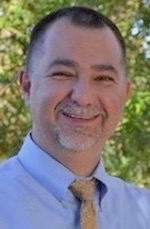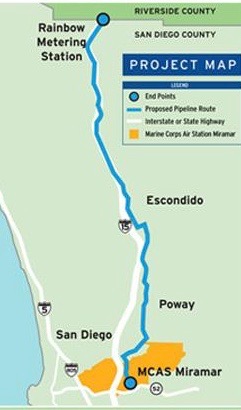Daily Business Report-May 22, 2018
Department of Defense awards will support instrument development across several UC San Diego disciplines. (Phot montage courtesy of Scripps Institution of Oceanography)
10 UC San Diego Researchers
Awarded Federal Funds to Develop
Technologies for the Military
The Department of Defense (DoD) announced awards to researchers at Scripps Institution of Oceanography at UC San Diego that will help scientists characterize waves, improve ocean weather and climate prediction, and analyze acoustics in the deep ocean.
The Defense University Research Instrumentation Program (DURIP) grants support the development of instruments that have a wide range of military applications. In all, 10 researchers from UC San Diego received awards.
“Congratulations to the annual DURIP award recipients,” said U.S. 53rd District Rep. Susan Davis. “I am impressed by all of the accomplishments of Scripps and other UC San Diego scientists. Your accomplishments have been pivotal to the innovative technologies and cutting-edge science that helps the Navy keep its edge. This federal funding will continue the great work of these scientists and will advance our national security.”
“These awards will enable significant advancements that have immediate importance to military applications and long-term societal benefits,” said UC San Diego Chancellor Pradeep K. Khosla. “This underscores the significance of our work, as well as the positive impact and return on investment that our campus provides.”
The awards to Scripps Institution of Oceanography, administered through the Office of Naval Research, continue a history of collaboration between the institution and the U.S. Navy that dates back to the years immediately prior to World War II, when the Navy would charter Scripps’ sole research vessel, E.W. Scripps, for research. In recognition of the 70th anniversary of the D-Day invasion, the Navy acknowledged the role played by Scripps researchers in developing ways to time amphibious assaults on Nazi positions using wind forecasts to select periods with favorable surf and swell conditions.
“UC San Diego’s top researchers make our region a global leader in defense technology innovation that is key to creating the 21st century military our nation needs. This year’s award will help them continue their state-of-the-art development and testing,” said Rep. Scott Peters. “San Diego’s research institutions are second to none and ready to compete against the best for this valuable research funding.”
The DURIP awards support development of a number of different oceanographic tools:
- Bruce Appelgate, associate director for Ship Operations and Marine Technical Support, received awards to procure an advanced deep-water multibeam echosounder and a system of instruments that will remotely track underwater objects, image biomass in the water beneath the vessel, and continuously measure the concentration of CO2 in the surface water.
These instruments will benefit a broad number of current and anticipated research programs.
- Oceanographer Peter Gerstoft and graduate student Mark Wagner received funds to develop an electromagnetic radar sensing system for sensing the atmospheric structure in the marine boundary layer, the section of atmosphere in direct contact with the ocean. Electromagnetic waves are sensitive to the humidity in the boundary layer. The system will consist of an array of transmitters at 2 GHz spanning 10 meters and initially located on the Scripps Pier and an array of sensors. By using two arrays the researchers will be able to extract higher-resolution details than with single sensor systems.
- The DURIP award to oceanographer Ken Melville’s group at the Air-Sea Interaction Laboratory will be used to purchase an autonomous surface vehicle known as a Wave Glider instrumented for marine atmospheric boundary layer and marine boundary layer measurements across the air-sea interface. Wave Gliders use an array of swim fins on a subsurface platform, capturing propulsive power from surface waves to tow a surface platform. The system will be used in forthcoming ONR-funded research on air-sea interaction involving surface waves and the boundary layers that span the surface.
- A team led by oceanographer Uwe Send received funds to acquire additional equipment for underwater acoustic data telemetry. Send’s lab uses acoustic modems in a wide range of projects to transfer data from bottom-mounted sensors or subsurface moorings in the Pacific, Atlantic, and Indian oceans. Researchers receive data from these modems either manually by lowering acoustic transducers over the side of a ship and connecting them to an “acoustic deck box,” or from surface platforms such as moored buoys using so-called “portable modems” that are attached to them, or using underwater gliders with an acoustic modem integrated. The new DURIP award allows the Send Lab to obtain another deck unit, another deep self-contained modem, and an additional portable modem in order to expand their use of real-time underwater acoustic data retrieval.
- Researchers Eric Terrill and Sophia Merrifield were awarded a DURIP Award for autonomous sampling equipment for extreme sea states. This award will allow for the procurement of two Boeing Liquid Robotics Wave Glider platforms. Scripps scientists will modify the Wave Gliders for operations in extreme sea states and adaptive sampling across ocean features with sharp gradients known as fronts. The Wave Gliders will also serve as a testbed for advancing autonomous control systems while leveraging the investigators’ prior experience operating the platforms in the Pacific, Atlantic, and Southern oceans.
- Oceanographer Peter Worcester received funds in 2017 and 2018 to upgrade six underwater acoustic transmitters that were originally manufactured by Teledyne Webb Research. These swept-frequency acoustic sources have been the workhorse in a series of experiments funded by ONR to study low-frequency, deep-water ocean acoustic propagation, including year-long experiments in the central North Pacific Ocean, Philippine Sea, and Arctic Ocean. The upgrades will expand the capabilities of the sources by providing the ability to transmit more complex signals and will extend the lives of the sources for use in future experiments.
Besides Scripps researchers, scientists Wei Xiong from UC San Diego’s Division of Physical Sciences, and Farhat Beg and Drew Hall of Jacobs School of Engineering received DURIP awards:
- Farhat Beg, a professor in the Department of Mechanical and Aerospace Engineering and the director of the Center for Energy Research at UC San Diego, received an award from the Air Force Office of Scientific Research to build a linear transformer driver, an instrument that can fire extremely fast, high-power pulses up to 800,000 amps in 200 nanoseconds. The instrument will enable researchers to reproduce the extreme conditions of matter that exist in planets and stars to test theories and models.
- Drew Hall, a professor in the Department of Electrical and Computer Engineering, received an award to purchase a multichannel arbitrary waveform generator. The equipment will allow researchers to test new ultra-low power wireless Internet-of-Things devices and evaluate how they perform in complex environments that mimic real-world deployment scenarios.
- Chemistry professor Wei Xiong received an Air Force Office of Scientific Research award to construct a unique table-top ultrafast X-ray spectrometer. This new instrument will be a miniature of national radiation facilities and it will enable the Xiong Group to reveal ultrafast charge dynamics in energy-related materials, with element and atomic specificities.
_________________
Salk Institute Receives $1.5 Million
from NANOS Co. for Alzheimer’s Research
The Salk Institute has received $1.5 million for research into the cellular underpinnings of Alzheimer’s disease from NANOS Co. Ltd., a company based in the Republic of Korea. The funds will establish a dedicated laboratory space called the NANOS Alzheimer’s Disease Stem Cell Suite, which will serve as a cell bank focused on Alzheimer’s. This cell bank will house both stem cells and somatic (body) cells from human donors, critical for analysis and testing of therapeutic drugs.
The new suite will allow Salk scientists to collect samples and data from a large number of individuals to more accurately pinpoint processes, like DNA repair, that go awry in Alzheimer’s and to identify novels avenues for intervention. By collecting skin samples from hundreds of individuals and transforming these cells into neurons in the NANOS Alzheimer’s Disease Stem Cell Suite, Salk scientists will be able to analyze these brain cells and test novel therapeutic compounds.
_________________
Researchers Operate Lab-Grown
Heart Cells by Remote Control
Researchers at University of California San Diego School of Medicine and their collaborators have developed a technique that allows them to speed up or slow down human heart cells growing in a dish on command — simply by shining a light on them and varying its intensity. The cells are grown on a material called graphene, which converts light into electricity, providing a more realistic environment than standard plastic or glass laboratory dishes.
The method, described in the May 18 issue of Science Advances, could be used for a number of research and clinical applications, including: testing therapeutic drugs in more biologically relevant systems, developing use-specific drugs that are more precise and have fewer systemic effects, and creating better medical devices, such as light-controlled pacemakers.
_________________
Northrop Grumman Named
a Top 50 Company for Diversity
Northrop Grumman Corporation has been ranked 23rd on DiversityInc’s annual list for the Top 50 Companies for Diversity. The company moved up from 29th in 2017 and was once again the top-rated aerospace and defense company. In the DiversityInc specialty lists rankings Northrop Grumman was rated No. 1 for veterans (for the second year in a row), No. 2 for support to people with disabilities (for the second year in a row) and No. 2 for diversity councils. For the last nine years Northrop Grumman has earned a Top 50 ranking for diversity from DiversityInc.
_________________
3D Headphone Startup Ossic Collapses,
Stiffing Thousands of Kickstarter Backers
San Diego 3D headphone startup Ossic has run out of money and is closing its doors, leaving hordes of Kickstarter backers who forked over $2.7 million in pre-orders out of luck. Ossic posted the news Saturday on its Kickstarter page, as well as on its website. “It is with an extremely heavy heart that we must inform you that Ossic is shutting down and will be unable to deliver the remaining Ossic X headphones,” the company said. The Ossic X was an ambitious and expensive product to develop. With funds from the crowdfunding campaign, along with angel investment, we were able to develop the product and ship the initial units. However, the product still requires significantly more capital to ramp to full mass production, and the company is out of money.” — San Diego Union-Tribune
_________________
Personnel Announcements
Juan Carlos Hernandez Joins California
Southern Small Business Developement Corp.

Juan Carlos Hernandez has been named chief credit officer for the nonprofit California Southern Small Business Development Corporation, which administers a state-funded, loan-guarantee program to help secure financing for small businesses in California, particularly San Diego and Imperial counties.
Hernandez replaces Marvin Groner, who served as CCO of California Southern for 25 years
Prior to joining California Southern, Hernandez served as chief credit officer for Accion San Diego, a nonprofit organization that provides capital to small business owners in San Diego, San Bernardino, Riverside and Imperial counties. He also worked for U.S. Bank and Metropolitan Bank Group.
Hernandez joins the staff of California Southern, which includes Kurt Chilcott and Robert Villarreal, who both also hold executive positions with the nonprofit CDC Small Business Finance.
California Southern partners with community and regional banks and other local lending institutions to provide loan guarantees for small businesses unable to qualify for conventional financing.



